The History of MIDI -Chapter 5-Precursors to MIDI
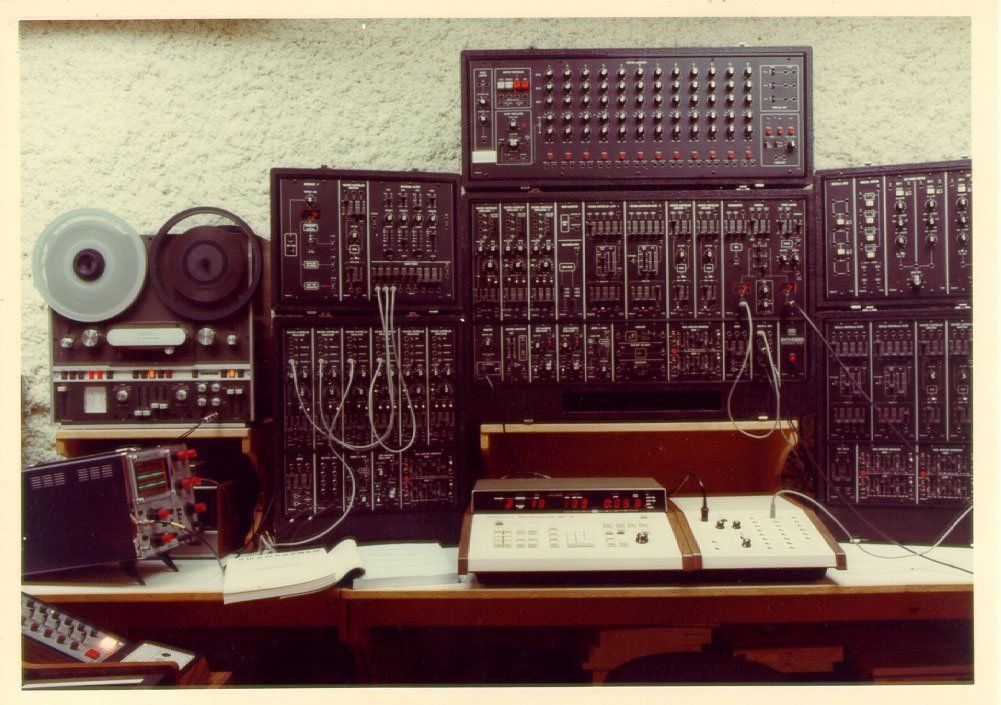
Analog Synths, Drum Machines, and Sequencers
In the last chapter of the history of MIDI, we covered the early history of electronic musical instruments, the period from 1900 to 1963.
By the mid 1960’s thanks to the work of 2023 MIDI Association Lifetime Achievement Award winners Don Buchla, Ikutaro Kakehashi, Tsutomu Katoh, Bob Moog, Tom Oberheim, Alan Pearlman, Dave Smith and Dave Rossum the concept of electronic Synthesizers, Drum Machines and Music Sequencers was well established.
- A synthesizer is an electronic musical instrument that generates audio signals.
- A music sequencer is a device or application software that can record, edit, or play back music, by handling note and performance information.
- A drum machine is an electronic musical instrument that creates percussion sounds, drum beats, and patterns.
In the early 1980’s, these pioneers along with 2025 MIDI Association Lifetime Achievement Award winners Karl Hirano (Yamaha), Tadao Kikumoto (Roland), and Tetsuo Nishimoto (Yamaha) would push music production technology further and bring the industry to create a universal digital music standard for connectivity- MIDI.
So this article was updated in December of 2024 with additional information about the contributions of 2025 MIDI Association Lifetime Achievement award recipients John Bowen, Karl Hirano, Tadao Kikumoto, Tetsuo Nishimoto, Chris Meyer, Jeff Rona and Brian Vincik to the early development of MIDI.
To really understand MIDI where MIDI came from, we need to explore the way electronic musical instruments were connected together before MIDI.
Analog connections with CV/GATE
Before MIDI, the most common way to interface analog synthesizers was analog connections using Control Voltages (CV).
CV, Gates, and Triggers are foundational concepts in analog synthesizers, forming the primary means of controlling and sequencing sound. Here’s an overview:
Control Voltage (CV)
• Definition: A voltage signal used to control various parameters of a synthesizer, such as pitch, filter cutoff, amplitude, or modulation.
• How it Works:
• The voltage corresponds to a specific parameter. For example, 1 volt per octave is a common standard for pitch control, meaning each increase of 1V raises the pitch by one octave.
• CV can also control non-pitch parameters like filter frequency or amplitude.
• Sources of CV:
• Keyboards: Generate pitch CV based on the key pressed.
• LFOs (Low-Frequency Oscillators): Create periodic CV for vibrato or tremolo effects.
• Envelopes: Generate time-varying CV for shaping sound dynamics.
An envelope generator in an analog synthesizer is used to shape the dynamics of a sound over time. Commonly associated with ADSR envelopes (Attack, Decay, Sustain, Release), the generator modifies aspects such as amplitude, filter cutoff, or pitch.
Gates
• Definition: A binary signal (on/off) used to indicate when a key is pressed and held.
• How it Works:
• A Gate signal stays high (e.g., +5V) as long as a key or trigger source is active, and goes low (0V) when released.
• Gates are used to control events like starting an envelope generator or enabling a sound.
• Applications:
• Telling the envelope generator to start and sustain its cycle.
• Triggering sequencers or synchronizing events.
Triggers
• Definition: A short voltage pulse used to signal a single event, typically the start of an action.
• How it Works:
• Unlike Gates, Triggers are momentary and do not sustain. They are often just a single high pulse (e.g., +5V for a few milliseconds).
• Triggers indicate the beginning of an event, such as the attack phase of an envelope generator.
• Applications:
• Resetting LFOs or sequencers.
• Starting percussive sounds or one-shot events.
Interplay Between CV, Gates, and Triggers
In a typical analog synthesizer patch:
1. CV from the keyboard sets the pitch of an oscillator.
2. Gate tells the envelope generator to start and sustain until the key is released.
3. Trigger signals the envelope generator’s attack phase or starts a one-shot effect.
Practical Example
• Playing a Key on a Synthesizer:
• Pitch CV sets the oscillator frequency.
• Gate starts the envelope generator, which controls the amplitude or filter.
• If the envelope has a trigger-based attack phase, the Trigger initializes it.
Understanding CV, Gates, and Triggers is essential for patching and designing sounds in analog and modular synthesizers. They allow for precise and expressive control over sound parameters.
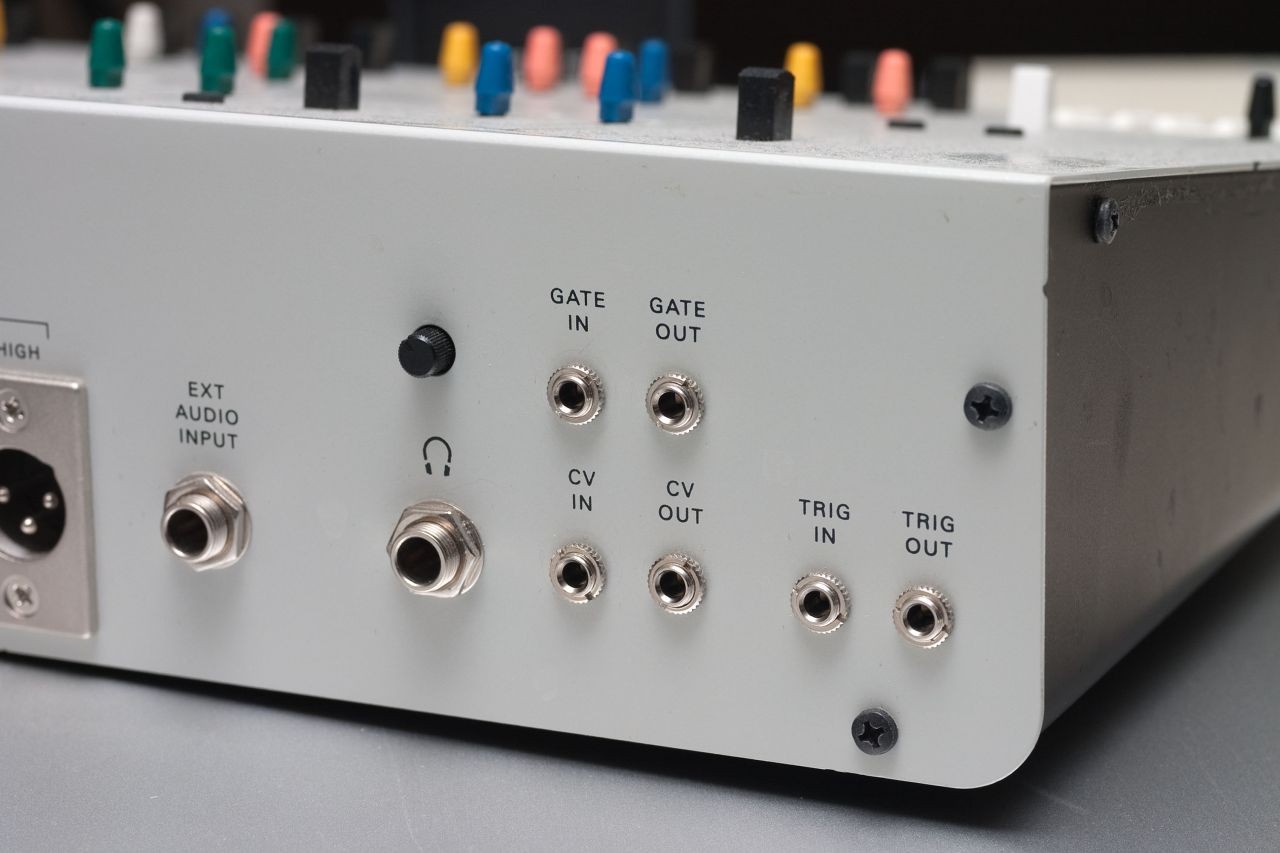
To get started understanding the core principles of analog synthesis, there is no better resource we can recommend than The Moog Foundation’s Learning Synthesis Pages.
For a more interactive experience, this is a great site from Ableton which is also available in Spanish.
Analog Sequencers
Moog, Buchla and ARP had always included Analog Sequencer Modules in their modular synthesizer designs.
Within a few years other companies including Roland and Korg were making similar products.
And of course, Sequential Circuits was building a Model 600 sequencer that would work with both the MiniMoog and the Arp 2600.

Korg SQ10 Sequencer


The Challenge with Control Voltages
The problem with Control Voltage was that from the very start there were two different standards.
- Volts per octave was popularized by Bob Moog in the 1960s.
- One volt represents one octave, so the pitch produced by a voltage of 3 V is one octave lower than that produced by a voltage of 4 V.
- Each 1 V octave is divided linearly into 12 semi-tones.
- Companies using this CV method included Roland, Moog, Sequential Circuits, Oberheim, ARP and later the Eurorack standard from Doepfer, including more than 7000 modules from at least 316 manufacturers.
This convention typically had control modules carry the source voltage (B+, 5 V) on the ring of a TRS jack, with the processed voltage returning on the tip.
However, other manufacturers have used different implementations with voltages including –5 V to 5 V, 0 V to 5 V, 0 V to 10 V with the B+ possibly on the tip.
- Hertz per volt was used by most but not all Korg and Yamaha synthesizers, represents an octave of pitch by doubling voltage, so the pitch represented by 2 V is one octave lower than that represented by 4 V, and one higher than that represented by 1 V.
The two implementations are not completely incompatible.
Connecting a Hz/volt keyboard to a volts/octave synthesizer will produce sound, but it will be completely out of tune.
Of course with voltages it was easy to modify things with a few parts and a soldering iron.
At least one commercial interface has been created to solve the problem, the Korg MS-02 CV/trigger interface.

But these interfaces weren’t really intuitive for musicians and there were a lot of cables involved.
Don Lewis and the Live Electronic Orchestra

One of the inspirations for MIDI was Don Lewis and his Live Electronic Orchestra.
Ikutaro Kakehashi met Don in mid 1970s and made frequent trips to San Francisco with his engineers to take in the magnitude of what Don had accomplished with creating “central controller” keyboards for the ARP 2600’s, the Oberheim SEMs, the Hammond Concorde, effects and even more powerful the ability to mix everything on the controller panel.
But Don had to piece his system together and modify and solder parts.
Don Lewis was such a big part of MIDI’s story that Don was invited to the 2013 Grammy event when Dave Smith and Ikutaro Kakehashi received a Technical Grammy for MIDI.
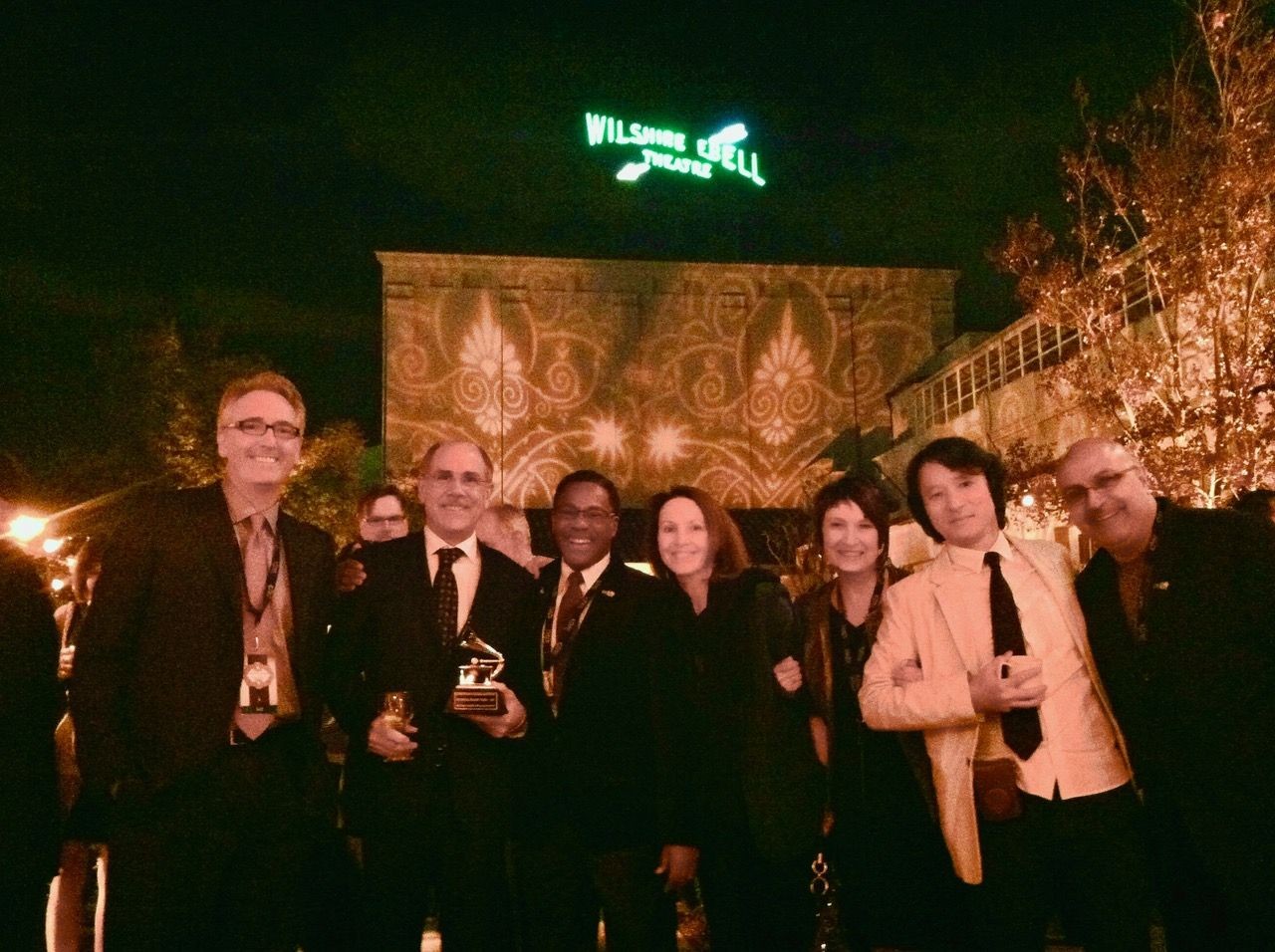
The NAMM Museum Of Making Music has a display of Don’s Live Electronic Orchestra that you can see in person and learn about if you are in Carlsbad, Ca.
The Roland Micro Composer MC 8

The Roland MC-8 released in 1977 was a seminal product. It was a microprocessor based sequencer that connected to an MC-8 Interface to send out analog voltages. So it it was a hybrid digital and analog system as such it had some similarities to the Electones that Nishimoto-san from Yamaha was working on.
It was initially conceived by Ralph Dyck, a Canadian composer and Roland System 100 user.
Ralph went his his local Roland dealer in Canada who introduced him to Ikutaro Kakehachi, the President of Roland.
Kakehachi got Roland engineer Yukio Tamada involved who made the Micro Composer capable of multi-tracking (allowing multiple parts to be played simultaneously). The MC-8 could play eight notes at the same time so it was capable of complex chords.
Tamada-san also integrated the so-called ST/GT method -Step Time for sound length and Gate Time for note length.
This ST/GT concept was later adopted by other Japanese manufacturers.
The Microcomposer is also significant in the development of music production concepts because it was also the first time that a Time Base with resolution of a quarter note was introduced into the world of modular synths.
Many of the ideas that were developed for the Micro Composer would find their way into an industry standard musical digital interface that was on the horizon.

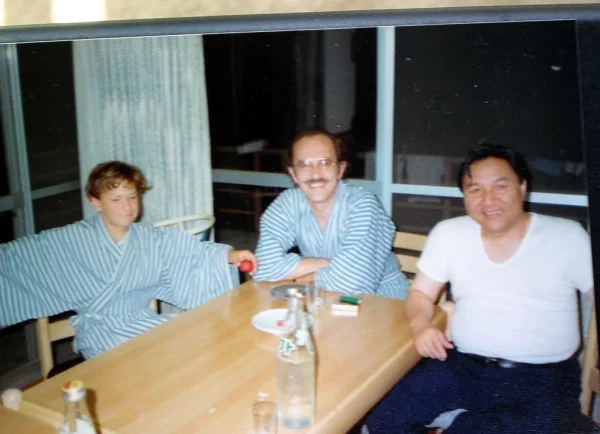
Ralph Dyck and his son, Jeff in Japan with Ikutaro Kakehachi, President of Roland

Roland:
In the late 1970s, musicians certainly had virtually no background in computers. What sort of reaction did they have to the “music by numbers” method of programming the MC-8?
Ralph Dyck:
They didn’t like it much except Tomita and Steve Porcaro and Suzanne Ciani.
Steve Porcaro did a lot of musically interesting parts with it.
Roland:
When was the last time you worked with an MC-8, and what sort of production was it?
Ralph Dyck:
I think that the last time I used an MC-8 was with Toto, maybe for their album ‘Turn Back’.
Interview from the Vintage Roland MC-8 Sequencer Archive
Here are two Youtube videos of the MC-8 in action. One of Alex Ball’s recreation of a track from Yellow Magic Orchestra and the other is one of the demo songs for the MC-8 by Ralph Dyck
Yamaha’s Journey From Home Organ to Synthesizer
Yamaha was taking a slightly different path to the world of synthesizers by way of home organs.
You can read more details in this history of Yamaha synths.
Yamaha Synth 50th Anniversary Chapter 0.
In 1959, Yamaha had released its first electronic organ, the Electone D-1.
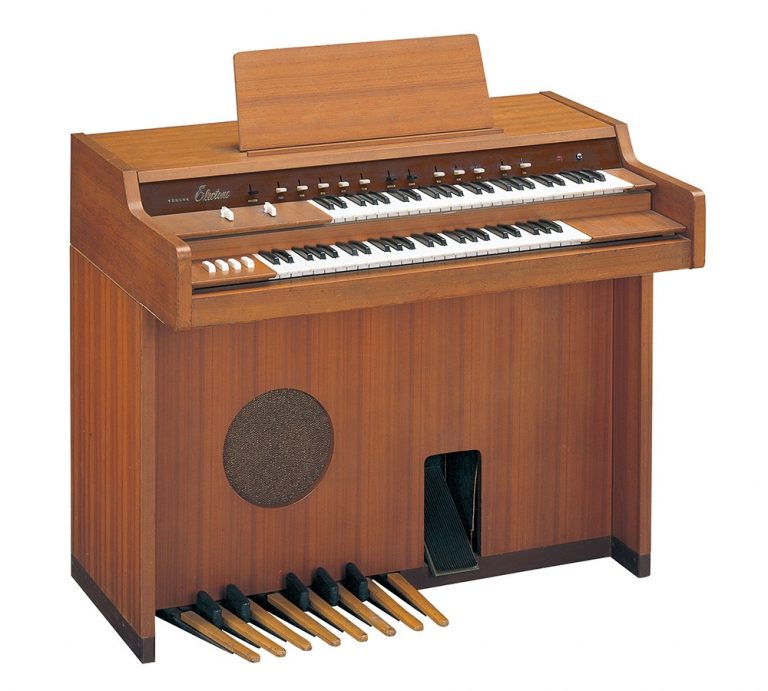
A group of Electone engineers at Yamaha including 2025 MIDI Association LifeTime Achievement Award winners Karl Hirano and Tetsuo Nishimoto were looking towards the future and in 1968 developed a futuristic prototype called the EX-21 (21 was symbolic of the 21st century) and then a commerically available version- the EX-42.
These Electones were still using octave divide technology, but also had a number of unique features and technological advances including a key scanner for a primitive dynamic voice allocation, a smaller third manual solo keyboard that was an early version of what would become the first Yamaha Synth, the SY-1. This solo keyboard was very unique in that you could manually create vibrato by wiggling the keys.
Heralding functionality that would come later in full-fledged synths, a special tone called Wave Motion could be pitch shifted relative to other tones on the upper keyboard, and the result of combining these tones was a unique undulating sound.
Certain tones were also touch responsive, and although limited in number, they provide clear evidence of the level of commitment of our developers. Additionally, the upper, lower, and foot keyboards were also equipped with tone levers called couplers that allowed voices created on one keyboard to be mixed with those of another, foreshadowing the layering feature of modern synthesizers.
The EX-42 had similar solo and portamento keyboards to the EX-21. The solo keyboard could be used to play a total of seven voices—four monophonic and three polyphonic. Players could mute the monophonic voices or apply vibrato by wiggling the keys left and right; meanwhile, solos with chords and harmonies could be played using the Chimes, Vibraphone, and Bell-Lyra polyphonic voices.
Positioned to the left of the solo keyboard, the portamento keyboard was not unlike a ribbon controller capable of producing its own sound. It had six different voices, and the player could add expression in the form of sound effects and smooth pitch transitions. What’s more, it had an auto-mute mode and reverb, which was particularly effective for creating cosmic, other-worldly sounds. This portamento keyboard later reappeared in the GX-1 and the CS-80.
The EX-42 was the first Electone to come with auto-rhythm patterns—13 of them to be exact—and like all previous Electones, it had four percussion buttons.
The instrument was also equipped with four buttons between the upper and lower keyboards for switching what would be called registration memories today. Each one of these buttons could be used to save and recall all upper, lower, and foot keyboard settings, and the player could also switch registrations by foot using any of four toe pistons that were, of course, linked to the registration buttons between the keyboards.

Yamaha
50th Anniversary of Yamaha Synths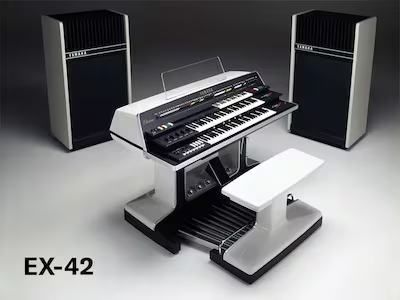
Finally the EX42 added Registrations (the equivalent of a Preset) which you could select from the front panel or with your feet adn was the first Electone to incorporate rhythms.

To hear these early Electones in action, you can easily see the lineage that leads to the GX-1, the DX7 and all Yamaha synths right up to the current Montage M with MIDI 2.0.
Here is an Electone E-30 from 1977.
Finally here is Keith Emerson with Emerson, Lake and Palmer performing Fanfare For The Common Man (Live at Olympic Stadium, Montreal, 1977)
All of these technology advances were steps on the way to modern music production and MIDI.
The Oberheim System- OB-8, DMX and DSX
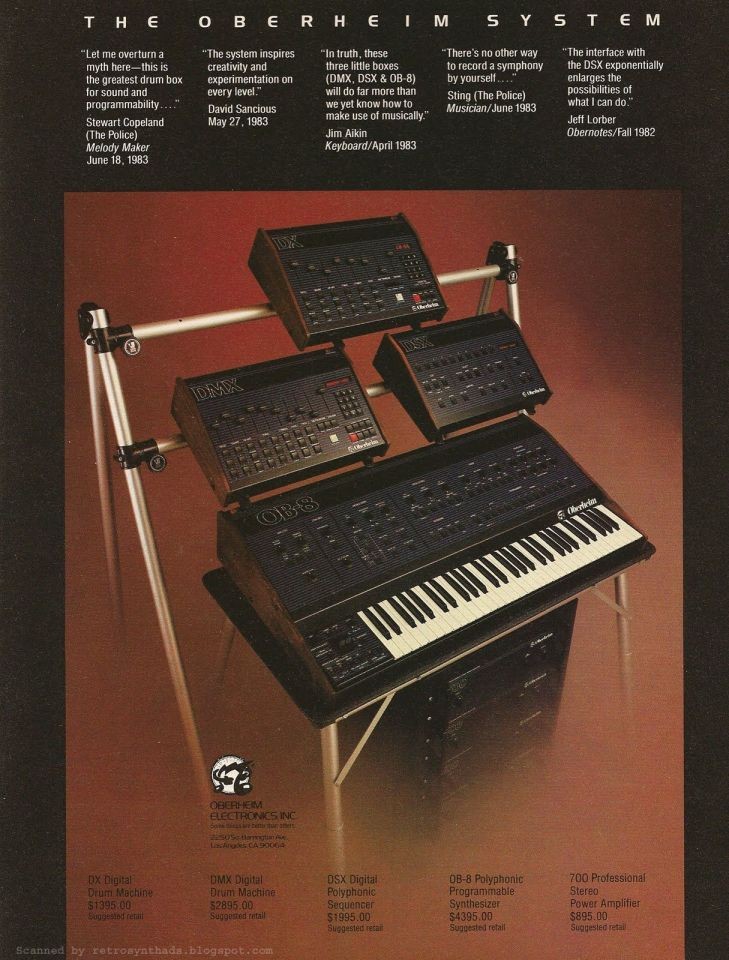
Marcus Ryle (who would later design the Alesis QS8 and ADAT and then go on to found Line 6) was just 19 years old when he got a job at Oberheim in 1980.
He had been studying at UC Santa Dominguez Hills because they had just installed a recording studio with a synthesizer. Tom Oberheim came as a guest lecturer to the college and after a long conversation with Marcus hired him to work at Oberheim alongside Tom and JL Cooper.
Oberheim had just come out with the OBXa which had a 37 pin D-Sub connector with a parallel bus. Soon Marcus was working on the design for the DSX Sequencer.
By connecting an Oberheim polyphonic synth to a DSX and the DMX Drum Machine, you had a complete music system.
It also has 8 separate CV and gate outputs to control up to 8 analogue synths of the 1 volt per octave variety. It has a capacity of 6,000 notes and is capable of 16-voice polyphony. It can store up to 10 sequences at any one time and there is cassette storage for building up a repertoire of sequences.
Each individual sequence can be independently recorded over 10 tracks and there are two recording modes: Real Time (with a 1/192 note resolution) or Quantize which will auto-correct your playing to ½ note (minimum) maximum or 1/32 note (demi-semiquaver) minimum.
There is also a programmable metronome with an internal speaker.
Paul Wiffen
Electronics & Music Maker, Future PublishingYou can even see by the back panel of a DSX Sequencer how intimidating musical instrument interfacing could be in the early 1980s.
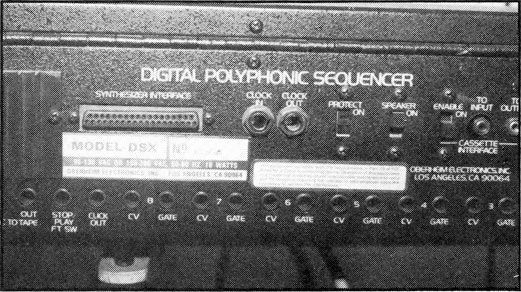
Here is a recording from 1983 of what was possible with the Oberheim System.
Roland DCB- Digital Communications Bus
Roland’s DCB (Digital Communication Bus was a proprietary data interchange interface by Roland Corporation, developed in 1981 and introduced in 1982 in their Roland Juno-60 and Roland Jupiter-8 products. DCB only provide note on/off, program change and VCF/VCA controls. The DCB interface was made in 2 variants, the earlier one used 20-pin sockets and cables, later switching to the 14-pin Amphenol DDK connector vaguely resembling a parallel port.
The DCB was a Serial Interface that ran at 31.25Kbps the same rate as MIDI over 5 Pin Din.

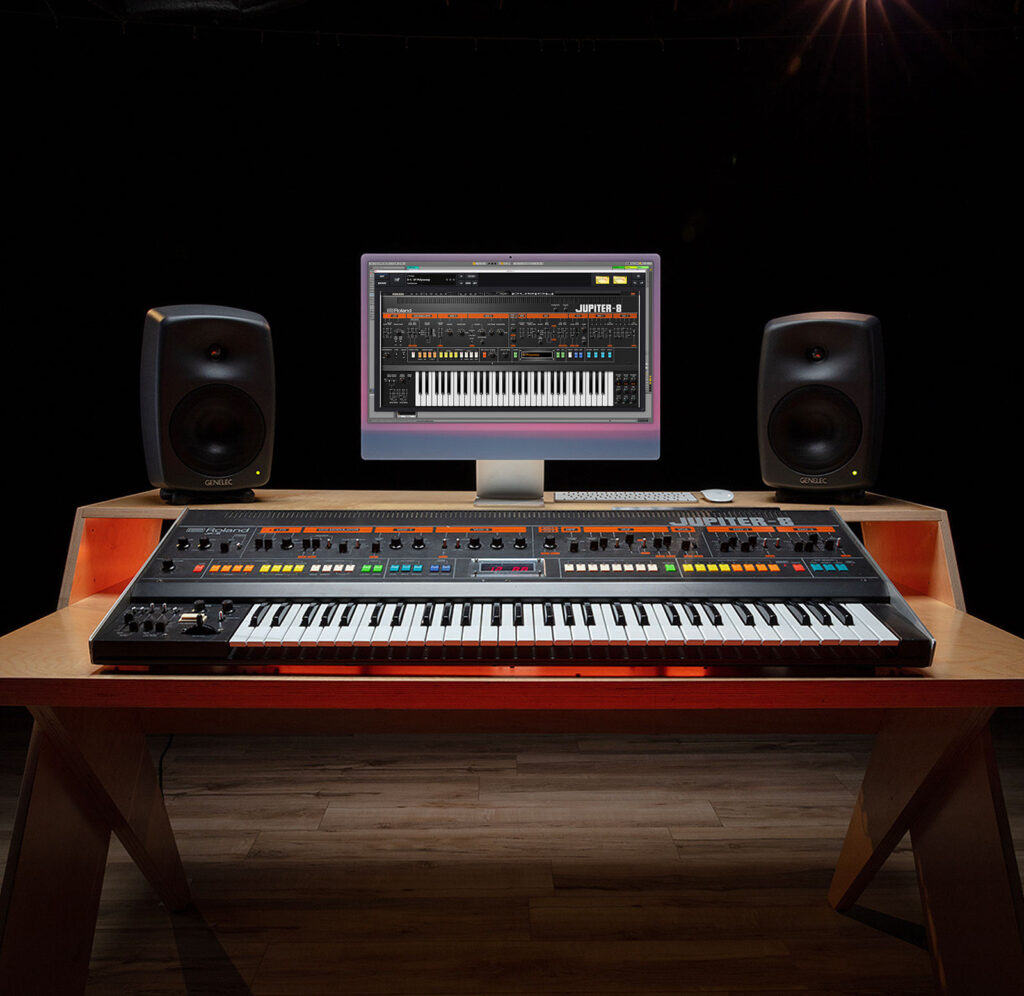
Roland DIN Sync
At the 2025 NAMM show, we will honor Tadao Kikumoto-san from Roland.
The TR808 and DIN sync are two of his great contributions to MIDI and to music production.

To synchronize their sequencers and rhythm machines Kikumoto-san and Roland developed a proprietary for syncing using a 5 PIN DIN Connector.
In 1981, the stage is set for the MIDI revolution
By 1981, multiple companies were working on proprietary digital interface standards including Oberheim, Sequential Circuits, Roland and Yamaha.
But several companies were already starting to worry about the problems these proprietary standards would create.
Customers would be forced to choose one company’s system and be locked into only one way of making music or they would have to spend lots of money on interface convertors to connect gear from different manufacturers together.
A couple of companies started to dream about a universal standard for synthesizers and music production.
In the next chapter of MIDI history, we will finally to tell the full story of how MIDI got started and who helped to make it happen.